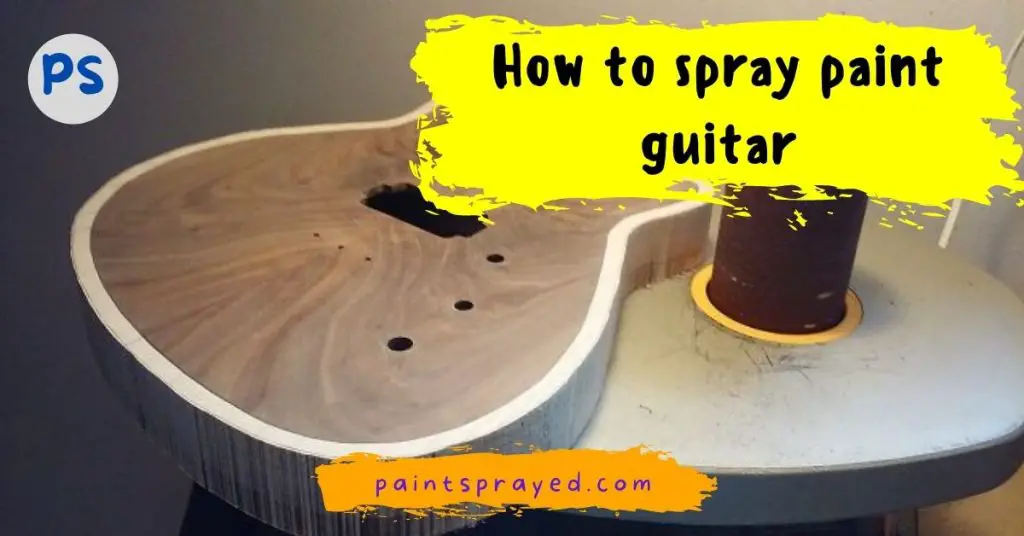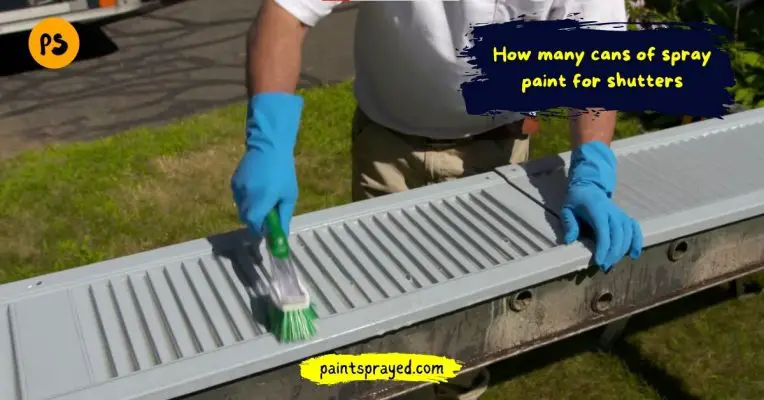Planning to replace an old and out-of-date guitar? Maybe you have a guitar from your friend which you have borrowed and you are looking for a way to return it to its original state.
Or maybe you simply want to give a new look to your old guitar. In order to do so, you will have to make sure that you know how to paint it properly.
This guide is for those newbies who wanted to give their guitar a new look but didn’t want to mess up the surface of the guitar.
So, in order to achieve the best, result out of your work then follow each step explained in this guide religiously.
Refinishing and repainting a guitar is actually pretty simple if you know what you’re doing.
Here’s a quick guide to the basics of refinishing a guitar, along with some tips that will help you get the best results.
How to spray paint guitar?
Tools you need to spray paint guitar
These are some tools that you need in the spray painting process of the guitar. With these tools, you will be able to give your favorite guitar a new look.
- Sanding paper
- Vacuum cleaner for cleaning residues
- Primer
- Spray cans or paint
- Spray gun (if you decide to use spray cans)
- Dust mask and eyeglasses for protection
- Screwdriver for unscrewing guitar
- Masking tape for covering
- Clear coat
Disassemble the guitar first
You will need to unscrew all the screws. Use the correct screwdriver to do so and remember where they came from.
When you remove the screws, remove the parts but leave them in the same order. Don’t mix them up or you will have to remember how they were and put them back together again.
The bridge and the frets should be removed as well. Hint: The bridge is at the top.
Remove the Neck of the guitar for painting
First of all, you will have to remove the strings from the guitar. Then unscrew the truss rod cover on the headstock.
Then loosen the truss rod. Let it stay loose for some time. Next, loosen the tuners and take them off completely.
Then remove the neck screws. Some of these screws may be hidden behind the truss rod cover. Take them out as well.
Then turn the guitar over and push the neck inwards, thus exposing the neck joint. Loosen and unscrew the neck screws. Then remove the neck.

Sand the surface
We recommend that you lightly sand the surface first because the guitar body has some oil on the surface, which will affect the coating effect.
Many guitar users sand the surface of the guitar, but I think it will take a lot of effort to do so.
More importantly, the guitars of different brands have different materials, and sanding can’t make the guitar body with the same thickness.
Besides, the surface of the guitar body is not flat and the corners are not round, and the surface will be changed after sanding.
You can use the polish before you spray paint. It can make the surface gloss, and it will not affect the spraying effect.
After sanding use a vacuum cleaner for collecting the dust and other particles.
Apply Primer on guitar
Before spray painting, you need to apply primer on your guitar. Primer helps the spray paint to stick your guitar better.
Mask the surface you don’t want to paint with masking tape. Spray paint on a thin coat of primer in one direction, then remove the tape.
Spray paint on a thin coat of primer in the other direction, then remove the tape. Wait for 15 minutes, then spray paint the color you want.
Start spray painting guitar surface
When applying spray paint, make sure you’re applying thin layers and allowing each thin coat to dry before applying another coat.
Before applying your clear coat of paint it’s best to wait and allow the colored coat of paint to completely dry for a week before moving on.
Apply clear coat
There are several ways to apply a clear coat. Some spray paints are already clear coats.
But for the most part, it is easier to use a two-part clear coat. To apply, you can run the clear coat through a spray gun, or apply it with a paintbrush.
Applying a clear coat is a very involved process, and also might require some sanding or bodywork to achieve the desired look.
The clear coat should be applied in thin layers so that the base coat paint can still be seen, and in different directions so that the clear coat layer blends into the base coat paint.
After all the processes reassemble your guitar and check it properly.
How many spray cans does it take to paint a guitar?
It depends on the size of the guitar and the desired coverage.
It is best to consult the manufacturer’s instructions for the specific spray paint you are using to determine the recommended number of coats and the amount of spray paint needed per coat.
It is also recommended to use a primer before applying the color coat as it will improve the final finish.
So you will need also a primer can. It is also important to note that it is important to work in a well-ventilated area and to wear a mask to protect against inhaling the spray paint fumes.
Does spray painting a guitar change the sound?
Spray painting a guitar can change the sound of the guitar, although the extent of the change will depend on the materials and construction of the guitar.
The type of paint used, and the method of application.
The wood of the guitar is porous and can absorb the paint, which can alter the resonance of the wood, and affect the sound of the guitar.
The thickness of the paint and the number of coats used can also affect the sound of the guitar.
If a lot of paint is used and it’s applied too thickly, it can add weight and dampen the guitar’s resonance.
Additionally, if the paint is applied to the guitar’s pickups, it can change the way they function, and affect the guitar’s tone.
It’s important to work with a professional luthier or have good experience before painting a guitar to ensure that the sound of the guitar is not significantly affected.
Can I paint a guitar with spray paint?
Yes, it is possible to paint a guitar with spray paint, but it is important to follow proper preparation and application techniques to ensure that the final finish is smooth and looks professional.
Before painting, the guitar should be thoroughly cleaned and sanded to create a smooth surface for the paint to adhere.
A primer should be applied before the color coat to ensure that the paint adheres properly and to improve the final finish.
When applying the paint, it’s important to work in a well-ventilated area and to wear a mask to protect against inhaling the spray paint fumes.
It’s also important to use light, even coats and to allow each coat to dry fully before applying the next.
It’s recommended to use high-quality spray paint specifically designed for use on musical instruments or automotive paint, as they tend to provide a more durable and longer-lasting finish.
Note that painting a guitar requires some skill and experience to make it look professional.
If you are not a professional luthier or do not have the experience it’s better to take it to a professional.
FAQ’s of How to spray paint guitar
Final thoughts on How to spray paint guitar
Thank you for reading my blog post, I hope you enjoyed learning more about how to paint your guitar.
If you’re interested in learning more about guitar painting, please visit my blog anytime. As always, I love to hear from my reader.
So please let me know if you have any questions or concerns about painting your guitar by contacting me in the comments section.
And I will help you out and clear your queries from your mind.

Matthew Edward is a professional painter who loves to paint and wants to share useful tips and tricks which he had learned in many years of experience in painting. He also used many products that can be used for painting he has tried and tested each and every product to give an unbias opinion about it in his review. This blog is very useful for those newbies who want to learn painting without making mistakes.






